Does Soil Type Affect Turf Laying?
One of the most common questions we’re asked is: ‘Does soil type affect turf laying?’
As a company that has been growing our own high-quality turf on fields across the UK for nearly 20 years, we can confidently say the answer is a resounding yes!
The soil beneath your grass is the foundation of a great lawn. Understanding the soil type and preparing your ground correctly before you lay turf are the most important things you can do.
If you don’t tailor your ground preparation to your soil type, your new lawn will likely struggle with issues like poor root growth and drainage problems further down the line.
The Big Three: Understanding UK Soil Types
There are three main soil types that can be found across the UK: loam, clay, and sandy soil. One of the easiest ways to check which one of these can be found in your garden is by performing a simple 'ball test'.
Start by collecting a soil sample from your garden and putting it on a saucer, then adding some water to it. Once this is done, stir the sample around with your finger to make a paste then knead it into a small ball pressing firmly.
- If the ball forms but struggles to keep its shape, it’s likely loam soil.
- If your soil forms a firm ball that holds its shape easily, you have clay soil.
- If you can’t form a ball at all or it crumbles apart easily, you have sandy soil.
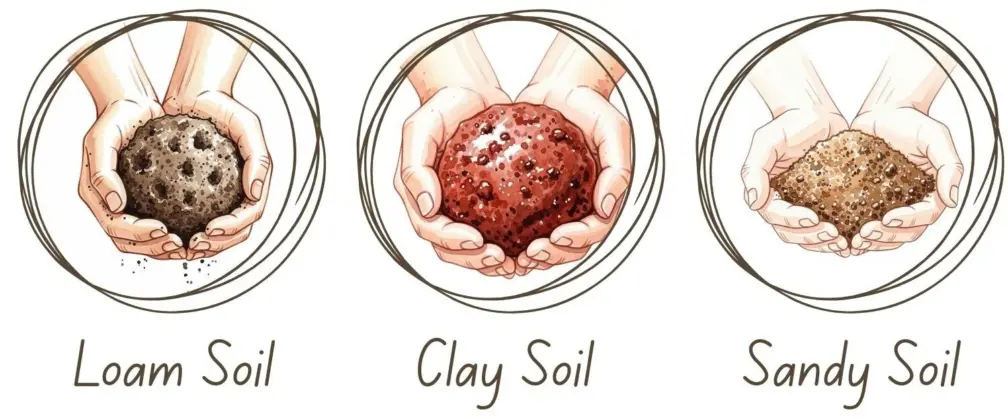
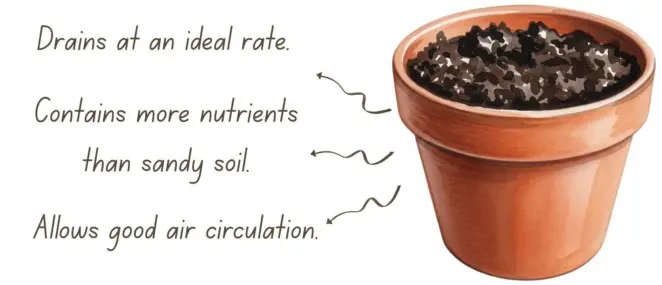
Loam Soil
Loam is considered ‘the ideal’ soil type for turf laying as it requires least preparation when compared to the other two types.
This is because it is made from a mixture of clay and sand with the addition of silt, benefitting from the advantages of each type without being affected by their weaknesses. When inspected closely, it typically looks dark brown or almost black. It may also feel damp and crumbly when touched.
In terms of its advantages, loam soil contains more nutrients than sandy soil and its texture allows it to drain at an ideal rate - faster than clay, but slower than sand. This allows the plants to access the moisture in the ground without a problem, while not becoming easily waterlogged. At the same time, loam soil allows the air to circulate to plant roots, protecting your plants from diseases that are often common in compacted soils.This type of soil is also not known to have many disadvantages since it is suitable for most plants to grow in.
Turf on Loam Soil
Turf tends to do extremely well when laid on loam soil. It does not need any additional preparation since loam already has the right drainage and retains nutrients well while not getting compacted easily.
Clay Soil
Clay soil is a heavy soil type that is often considered to be challenging to work with by many gardeners since, as the name suggests, it tends to have a high clay content.
When wet or rubbed with a finger, this type of soil should have a shiny appearance. The colour itself can also vary from reddish to dark brown.
The main advantage of clay soil is that it is fertile, retaining nutrients well, while also being able to handle periods of drought because of its slow-draining nature.
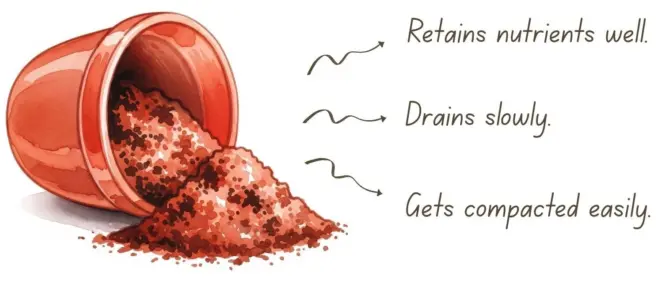
However, this also means that it tends to get waterlogged easily, potentially flooding your garden during periods of wet weather. It is also more prone to being compacted, especially if walked on while still wet due to its dense structure. Once compacted, it can be extremely difficult for water and nutrients to reach the grass roots, resulting in stunted growth or even death if the issue is not addressed.
Turf on Clay Soil
Improving clay soil for turf is a crucial step to achieve a healthy, beautiful lawn.
This can be done by incorporating organic matter into it, such as well-rotted animal manure or compost. Organic matter will help to break up any compacted soil which, according to the RHS, is the key to ‘making the water and nutrients held within the clay more easily available to plant roots’, ensuring the long-term health of your lawn.
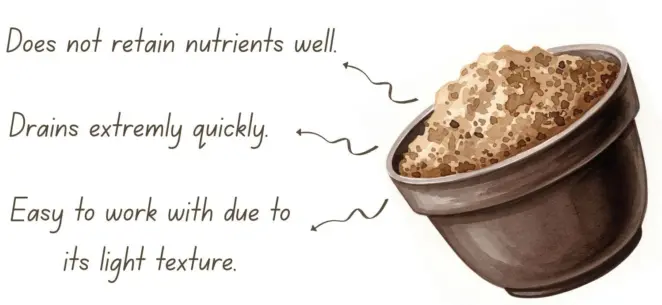
Sandy Soil
Sandy soil has a high proportion of sand and a little clay. This gives it a loose structure and a gritty feel when touched. In terms of appearance, it is usually pale brown, beige, or grey in colour.
Sandy soil will not stick together, unless extremely wet, just like real sand. This means the water and nutrients can move easily through the soil, providing very good drainage and aeration, while helping to prevent flooding. Its light texture also makes it much easier to work with when compared to heavier types, making planting easier and helping plant roots establish quicker.
However, this loose structure also has some serious drawbacks. Sandy soil is unable to retain essential plant nutrients and the extremely quick drainage often results in the soil drying out, especially in summer, leaving your plants with no moisture.
Turf on Sandy Soil
Just like with clay soil, to successfully lay turf on sandy soil, it needs to be improved using organic matter. This will give it more structure and improve its ability to retain moisture and nutrients, making it easier for turf to establish.
Preparing Soil for Turf
If you are unsure how to prepare soil for a new lawn in the UK, don’t worry - it’s easy, as long as you keep your soil type in mind.
Remove Existing Lawn
Preparing your ground for turfing should start with completely removing your old lawn. For a smaller area, this can be done with a spade.
Start by cutting squares of around 25 cm x 25 cm into your old lawn. Then, dig each square out individually aiming to be at least 8 cm deep to remove all the roots of the old turf. If you have any issues doing this, your soil may be too dry, and it is best to water it gently before trying again the next day.
If you have a large garden, consider hiring a turf cutter instead to ease the workload.
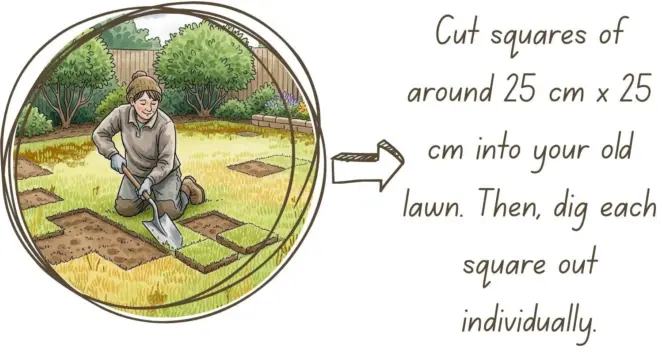
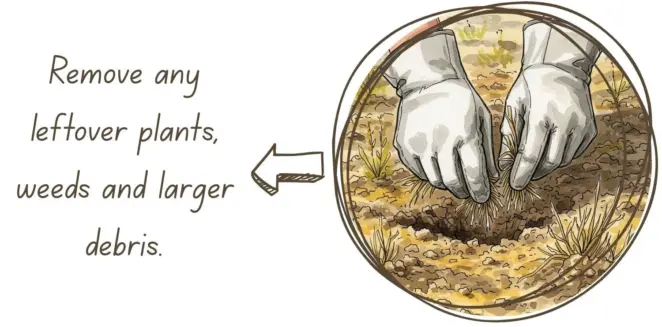
Clear the Area
The next step is to remove any leftover plants, weeds, and larger debris. Any leftover weeds can end up competing for nutrients with your new lawn, while large debris may cause it to be uneven, affecting its visual appeal and possibly causing trips and falls later on.
To remove these, you can either use your hands, a garden spade, or a machine, such as garden vacuums.
Test the PH Level of the Soil
To give your turf the best chance of establishing quickly and thriving, the pH levels of your soil should be anywhere between 6.0. and 7.0.
To make sure this is the case, purchase a pH testing kit from your local garden centre that will allow you to test your soil’s pH levels at home.
If the pH levels come back outside of this range, adding sulphur to the soil can lower them, while adding lime to it can raise them.

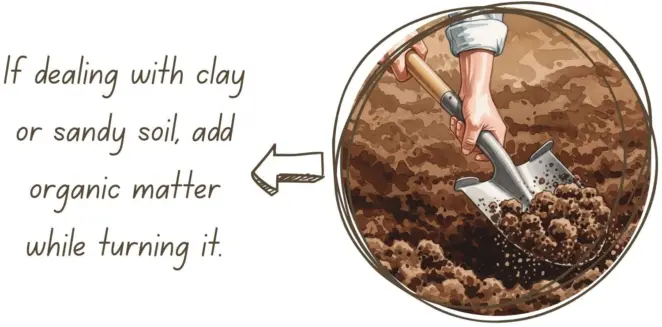
Turn the Soil
Turning the soil is used to break up any compacted areas so that your turf comes across less resistance when trying to establish roots. To do this, use a spade or a garden fork and dig to 15 cm for best results. If this proves to be challenging add some high-quality topsoil to the ground.
If you have a larger area to cover, use a powered cultivator instead.
This is also a perfect time to add organic matter if dealing with clay or sandy soil to improve it and create favourable conditions for turf to thrive from the start and in the long-term.
Rake and Firm the Soil
No matter your soil type, raking and firming the soil is a crucial step of preparing soil for turf. An uneven lawn may experience water collecting in any dips, potentially leading to lawn diseases in the future.
Start raking the soil with the goal to remove any larger clumps of soil until you produce a smooth, level surface.
Then, grab a garden roller if you have one or tread the surface by foot to get rid of any air pockets in the turf.
The process should be repeated until the whole area is firm and level, ready to lay your turf.
For more information on how to properly prepare your ground for turf, check out our 'Preparation for Laying Turf' tutorial.
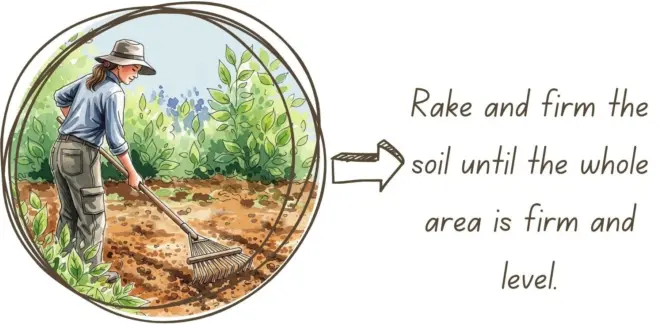
By taking the time to identify your soil type and learning about its needs, you can then tailor your soil preparation accordingly. With the right groundwork, your lawn will establish faster, grow healthier, and stay beautiful for years to come.
Remember - good soil preparation isn’t just a small step in the turf laying process - it’s the secret to a great lawn.
Now that you know the answer to ‘Does soil type affect turf laying?’ is yes, and you’ve prepared your ground accordingly, check out our ‘How to Lay Turf: The Ultimate Guide’ to learn how to lay your turf like a professional!
FAQs
Can I lay turf directly on top of old grass or weeds?
No, the old lawn and any weeds need to be removed before new turf is laid.
New turf needs to have direct contact with the soil to establish properly, something a layer of old lawn will prevent.
Weeds must be cleared too as they will likely compete with your new grass for nutrients, water, and sunlight, negatively impacting its health.
Do I have to buy new topsoil to lay turf?
Our customers often ask, ‘Do I need topsoil to lay turf?’ and the truth is – it depends.
If you can dig 15 cm down into the soil in your garden, you do not have to buy topsoil unless you choose to.
However, if the topsoil in your garden is too shallow or poor quality, then buying good-quality topsoil, such as the one supplied by Online Turf, is necessary.
How deep should the topsoil be for a new lawn?
The topsoil should be at least 10 cm deep. However, for best results, we recommend no less than 15 cm if you are planning to lay turf.
What is the difference between topsoil and turfing soil?
Turfing soil is formulated specifically for use when laying turf.
Topsoil is a general-purpose soil suitable for a range of gardening applications, including laying turf.


